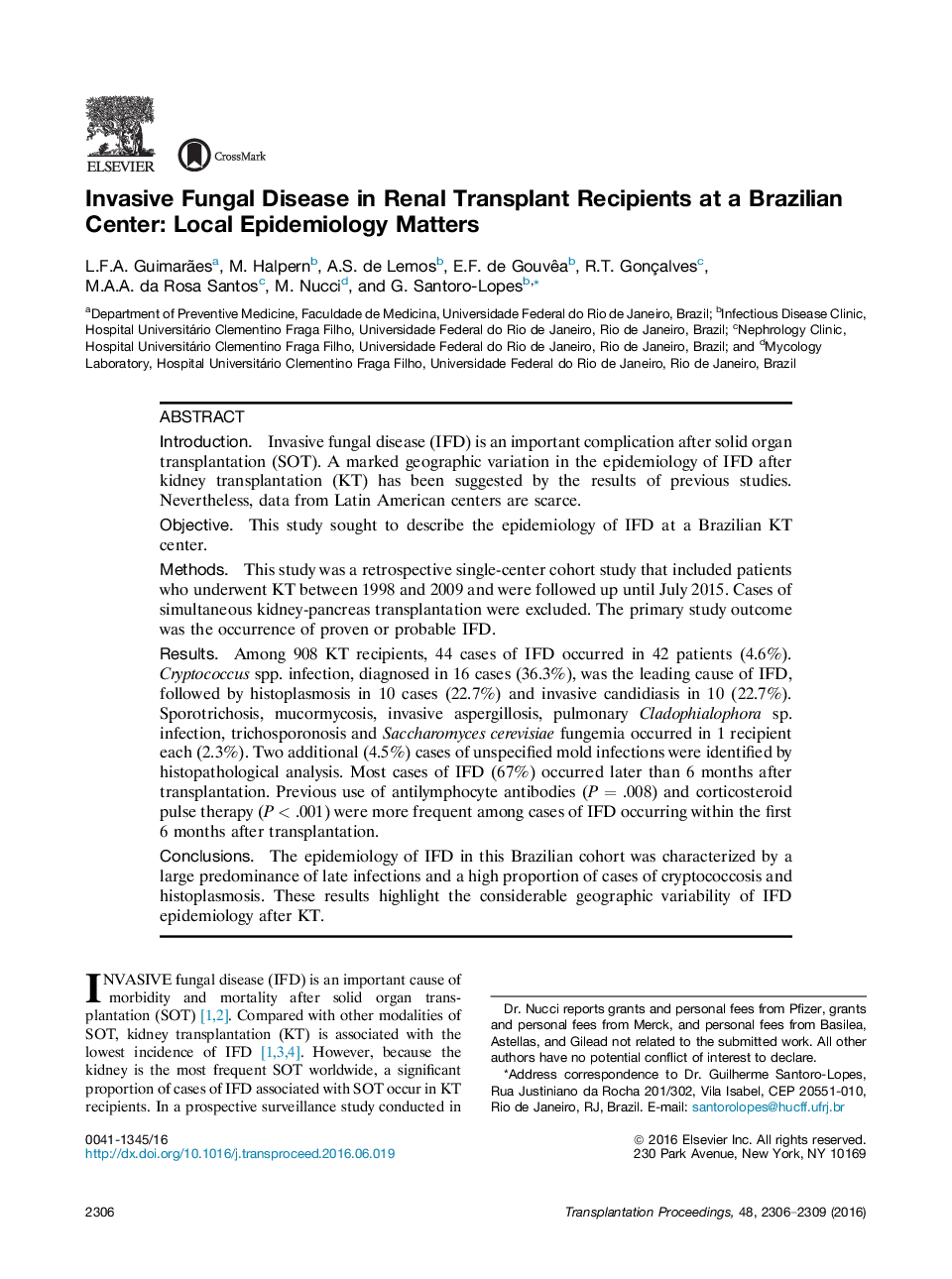| کد مقاله | کد نشریه | سال انتشار | مقاله انگلیسی | نسخه تمام متن |
|---|---|---|---|---|
| 5729354 | 1411680 | 2016 | 4 صفحه PDF | دانلود رایگان |
IntroductionInvasive fungal disease (IFD) is an important complication after solid organ transplantation (SOT). A marked geographic variation in the epidemiology of IFD after kidney transplantation (KT) has been suggested by the results of previous studies. Nevertheless, data from Latin American centers are scarce.ObjectiveThis study sought to describe the epidemiology of IFD at a Brazilian KT center.MethodsThis study was a retrospective single-center cohort study that included patients who underwent KT between 1998 and 2009 and were followed up until July 2015. Cases of simultaneous kidney-pancreas transplantation were excluded. The primary study outcome was the occurrence of proven or probable IFD.ResultsAmong 908 KT recipients, 44 cases of IFD occurred in 42 patients (4.6%). Cryptococcus spp. infection, diagnosed in 16 cases (36.3%), was the leading cause of IFD, followed by histoplasmosis in 10 cases (22.7%) and invasive candidiasis in 10 (22.7%). Sporotrichosis, mucormycosis, invasive aspergillosis, pulmonary Cladophialophora sp. infection, trichosporonosis and Saccharomyces cerevisiae fungemia occurred in 1 recipient each (2.3%). Two additional (4.5%) cases of unspecified mold infections were identified by histopathological analysis. Most cases of IFD (67%) occurred later than 6 months after transplantation. Previous use of antilymphocyte antibodies (PÂ = .008) and corticosteroid pulse therapy (PÂ < .001) were more frequent among cases of IFD occurring within the first 6 months after transplantation.ConclusionsThe epidemiology of IFD in this Brazilian cohort was characterized by a large predominance of late infections and a high proportion of cases of cryptococcosis and histoplasmosis. These results highlight the considerable geographic variability of IFD epidemiology after KT.
Journal: Transplantation Proceedings - Volume 48, Issue 7, September 2016, Pages 2306-2309
